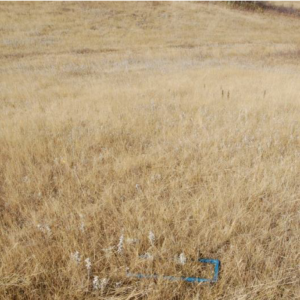Jay Woosaree and Marshall McKenzie, Land and Water Management, Alberta Innovates – Technology Futures
March 31, 2012
Executive Summary
The 2010 Reclamation Criteria for Wellsites and Associated Facilities for Native Grasslands was released in June of 2011 to relieve then current backlog of processing Reclamation Certificate applications, and to increase the quality of applications and public confidence in the oil and gas industry.
The Record of Observations (RoO) Tool was used in this project to assess reclamation success and to gain an understanding of how past practices such as seeding native species influences reclamation success. An additional objective was to determine the time length after reclamation required to gauge a reclamation certificate as a shorter time period could reduce unwarranted extension of surface leases and costs to industry.
Fourteen sites comprised of five sites in the Central Parkland, six in the Northern Fescue and three in the Dry Mixed Grass subregions were used for the study. Sites ranged from 2.5 years since reclamation to 15 years post reclamation.
Of the fourteen sites assessed all failed the criteria for one or more reasons. Ten sites had failures on invasive species; the young sites under 5 years after reclamation had issues with litter quality and quantity and structural layers. Access roads had soil compaction problems and needed additional vegetation assessments in order to obtain a better species composition. Many of the sites that failed could be passed with a non-routine application using justifications and professional judgment.
We analysed the seed mixtures that were used in this study and those that are sold by commercial seed companies. They had minimal (1-2) structural layers, and were dominated (45-55%) mostly by wheatgrasses and (15-20%) green needle grass. The desirable species representing the climax plant community comprised 10-15% of the seed mix. The various types of wheatgrasses should not be more than 15-20% and green needle no more than 5% of a seed mixture. Seed marketers should become familiar with the criteria and design better seed mixtures that are more representative to controls.
Our intent was not to pass or fail the sites, rather to understand how reclamation practices work. These sites could have passes the criteria using non-routine applications with justifications and professional judgment. Structural layers, third party impacts (continued use of access roads) or the influence of non-native forages, namely smooth brome grass from ditch lines, aspen tree grooves and other surrounding areas were the main reasons for failure.
Those sites that would not pass using professional judgement would necessitate control of invasive species, followed by a time lapse (a year or two) to ensure desired trajectories by prescribed practices. The few sites (three recent seedings in northern fescue, one in Parkland and two in Drymixed grassland) that would not pass the criteria were due to a lack of litter quantity or quality. These sites require more time to mature. However, if the sites have the desired species, one can assume that litter quantity and quality will eventually accrue.
Additionally, many of the fences surrounding these sites were forgotten after reclamation. Removal of the fence 2-3 years after seeding will encourage browsing by herbivores which in turn opens up the plant canopy, facilitating the recruitment of native infill and nutrient cycling.
Access roads posed a difficulty for us in that we did not have sufficient information as to their current status. Many access roads are kept by the land holder for use and therefore reclamation will not hold into perpetuity, bareground, rutting, compaction and compaction related species were common on all access roads. We suggest that even when accesses are reclaimed there are still many individuals using them for many reasons that exacerbate the condition of the roads. Ripping the access road to alleviate compaction while minimizing vegetation damage is a worthwhile practice but keeping vehicles off the roads could be more challenging. Additionally, bulk density could be used as an indicator of compaction. This allows the practioners to fix problems in the early years post-reclamation.
Grazing response has been a tool for measuring range health and to delineate plant communities for decades. This is an indicator from a different industry in Alberta and its use in the 2010 criteria can impact reclamation success. Plant communities are complex, diverse and variable in nature. How they respond to stresses allows them to build resiliency, which in turn makes them sustainable. Thus having a rating drop due to the presence of Type 4 increasers as a result of grazing or other stress should not constitute failures. Those species classified as class 4 grazing response species are highly adapted to disturbance, usually have good germination and establishment and are well suited for use in reclamation, but they have received a bad reputation due to overgrazed lands being dominated by them. They should rather be used as an indicator of poor practices. These Type 4 species can play a significant role in erosion control and native establishment on a site. Good reclamation practices should include them in a seed mix without exceeding control percentages on adjacent lands.
The effectiveness of the 2010 criteria will depend on the competence and professional judgement of the reclamation practioner. In our study, one of the sites received a reclamation certificate in 2010, yet was found to have failed under bareground, macro-contours, structural layers, litter quality and quantity, noxious weeds and presence of non-native forages. It is anticipated that many DSA’s will be submitted using a non-routine application.
The use of the 2010 Reclamation Criteria requires a non-bias and experienced assessor. It provides for a consistent and effective tool to gauge reclamation success and ecosystem functions, as well as forecasting site trajectory in a temporal community composition based scale. The following are some recommendations:
